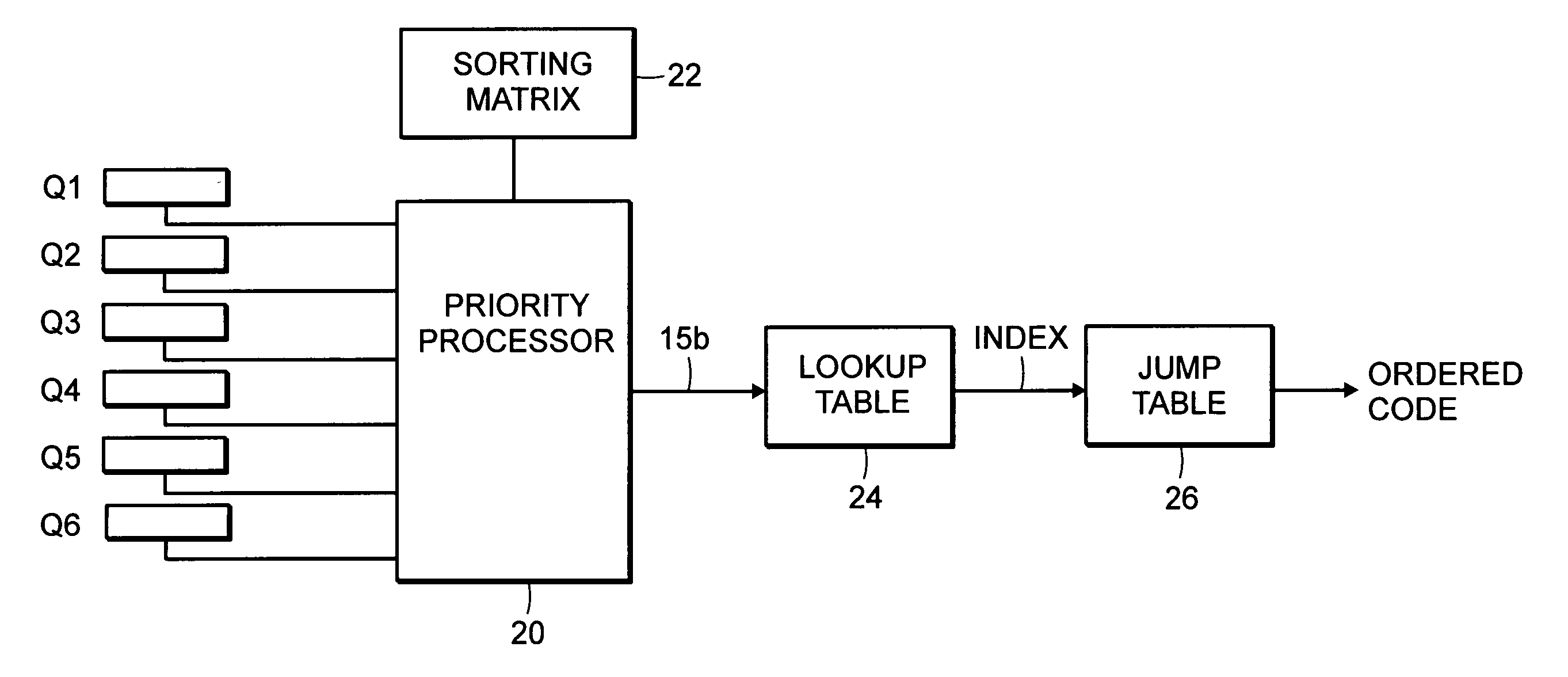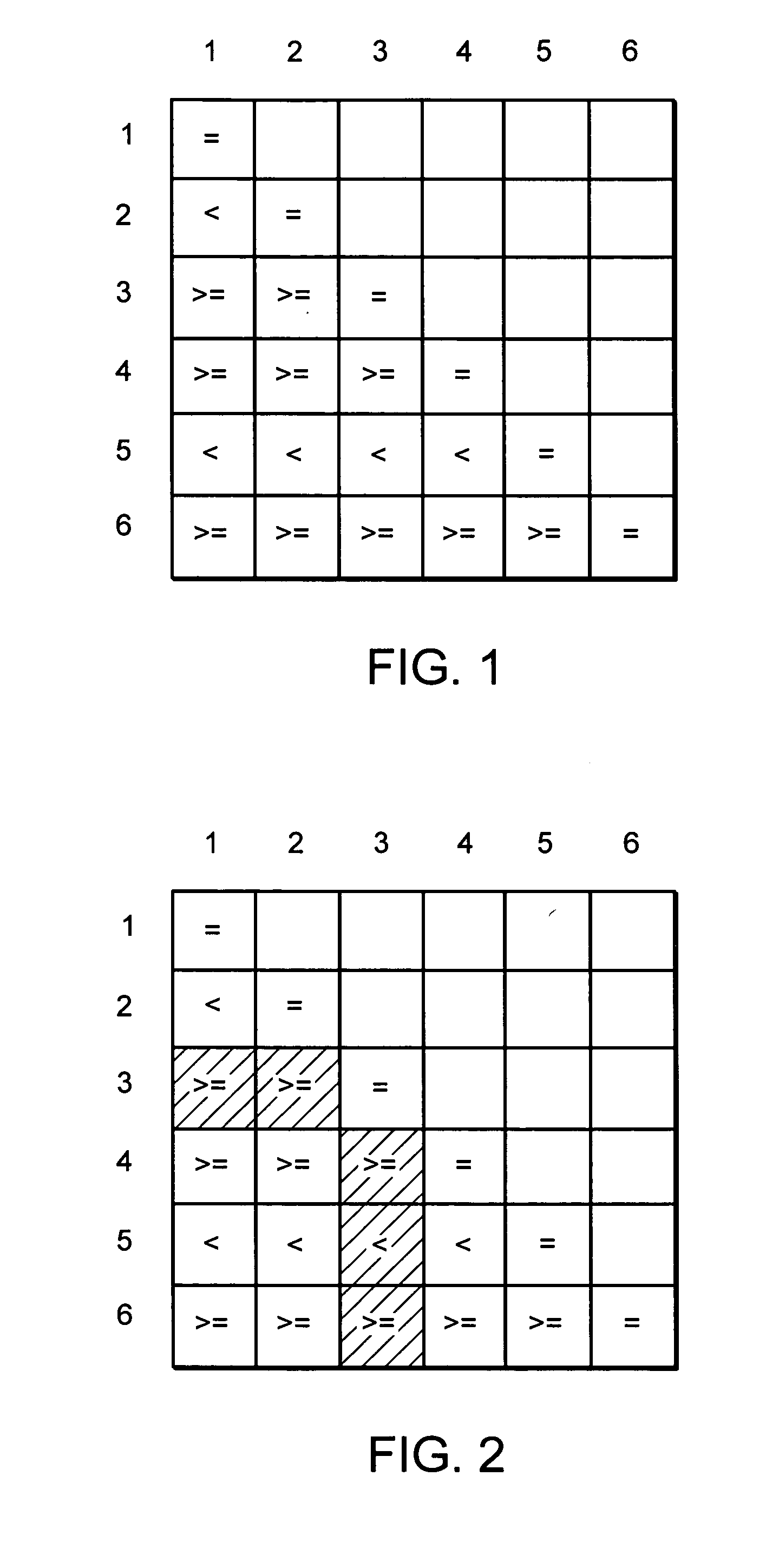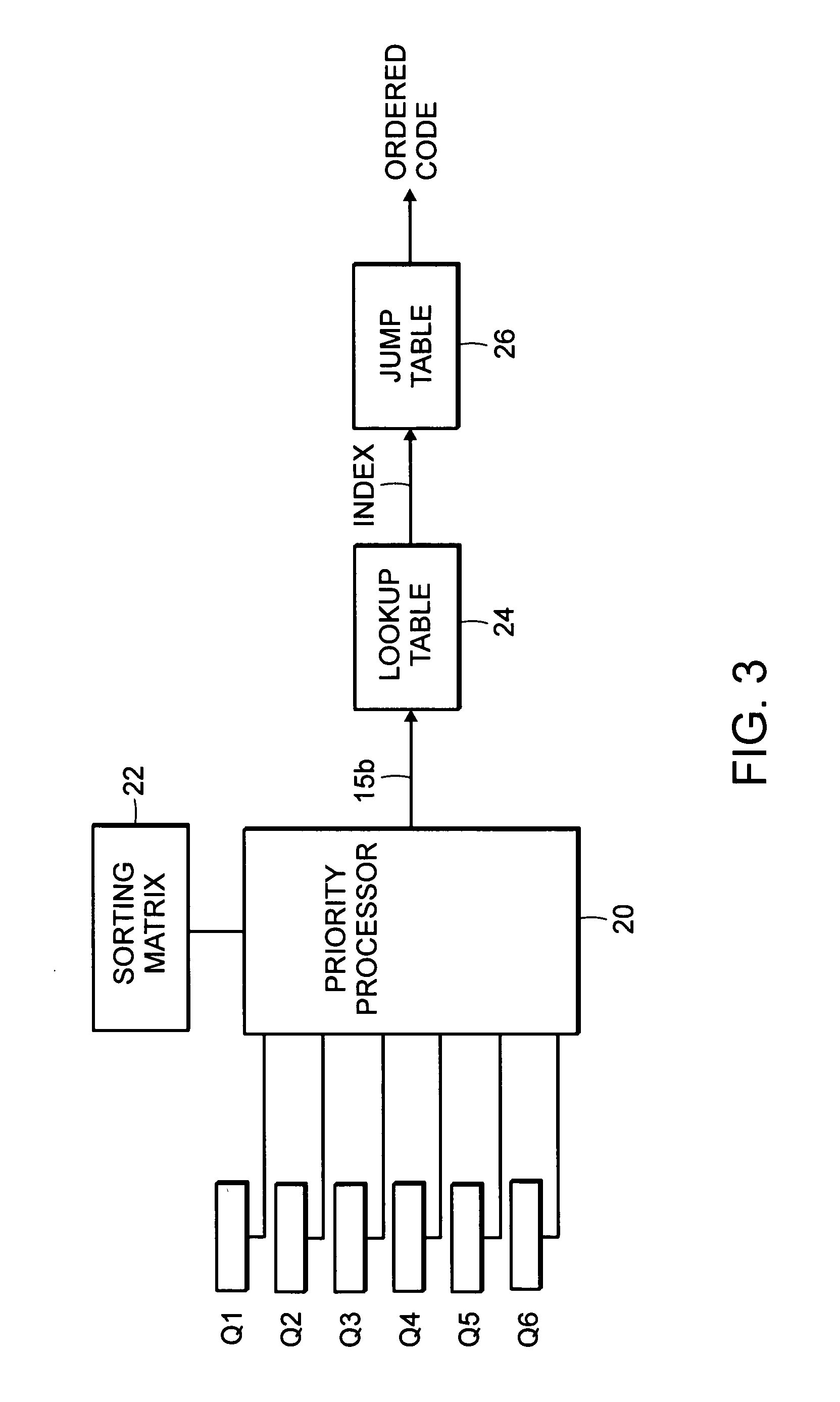Priority sorting
a sorting and priority technology, applied in the field of priority sorting, can solve the problems of difficult to efficiently implement on processors with high branch penalties, high branch penalties for certain processors, and high cost of sorting itself, and achieve the effect of efficient creation of the correct index
- Summary
- Abstract
- Description
- Claims
- Application Information
AI Technical Summary
Benefits of technology
Problems solved by technology
Method used
Image
Examples
Embodiment Construction
[0029] A description of preferred embodiments of the invention follows.
[0030] The invention is best illustrated with an example. Consider a six-queue WFQ system. The sorted priority order can be represented by a diagonal half of a two dimensional, N×N matrix, where each matrix entry indicates whether the priority of the Y dimension queue is lower than the X dimension queue. Each entry in the matrix is called a relative priority.
[0031] For example, the matrix in FIG. 1 encodes a priority order of 6, 4, 3, 1, 2, 5.
[0032] When a single queue's priority changes, only N−1 of the relative priority entries (where either the row or the column represents that queue) need to be recomputed. For example, if queue 3 changed its priority, only the entries shown in gray in FIG. 2 need to be recomputed. That recomputation potentially does not require any branches; instead it is a straight comparison, the result of which is written into the appropriate entry.
[0033] Relative priorities could be a...
PUM
 Login to View More
Login to View More Abstract
Description
Claims
Application Information
 Login to View More
Login to View More - R&D
- Intellectual Property
- Life Sciences
- Materials
- Tech Scout
- Unparalleled Data Quality
- Higher Quality Content
- 60% Fewer Hallucinations
Browse by: Latest US Patents, China's latest patents, Technical Efficacy Thesaurus, Application Domain, Technology Topic, Popular Technical Reports.
© 2025 PatSnap. All rights reserved.Legal|Privacy policy|Modern Slavery Act Transparency Statement|Sitemap|About US| Contact US: help@patsnap.com



